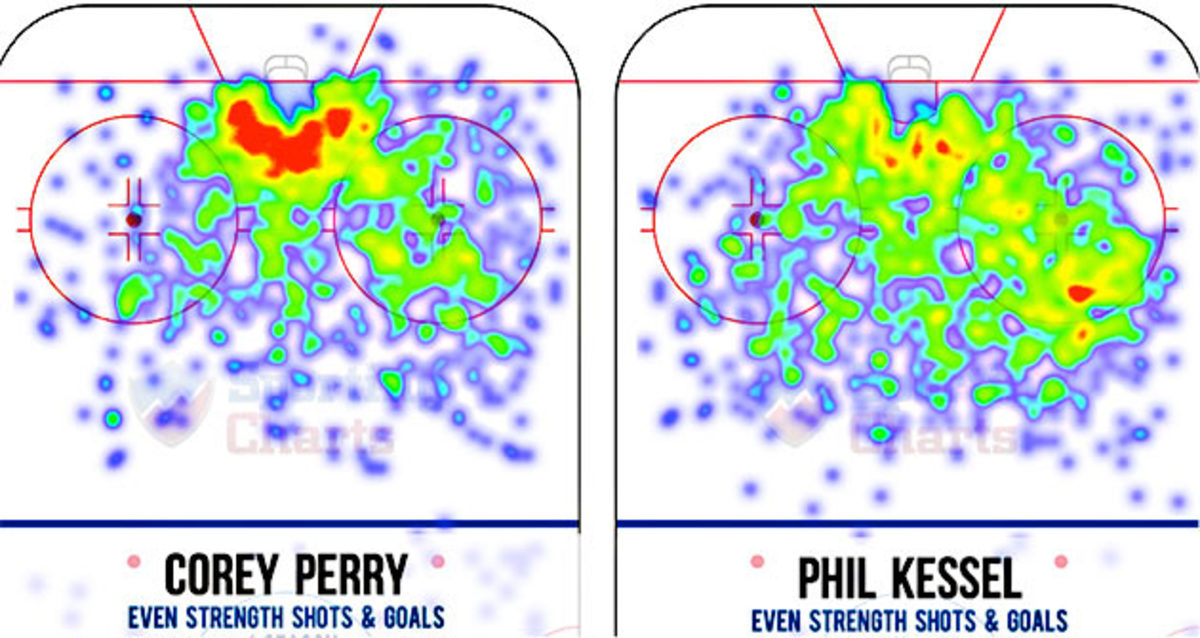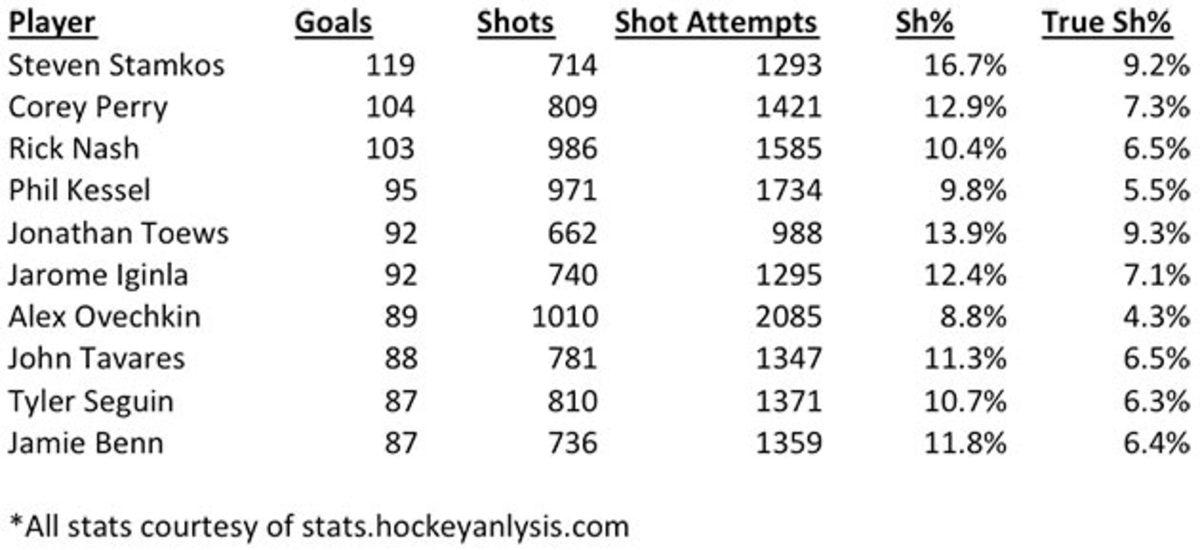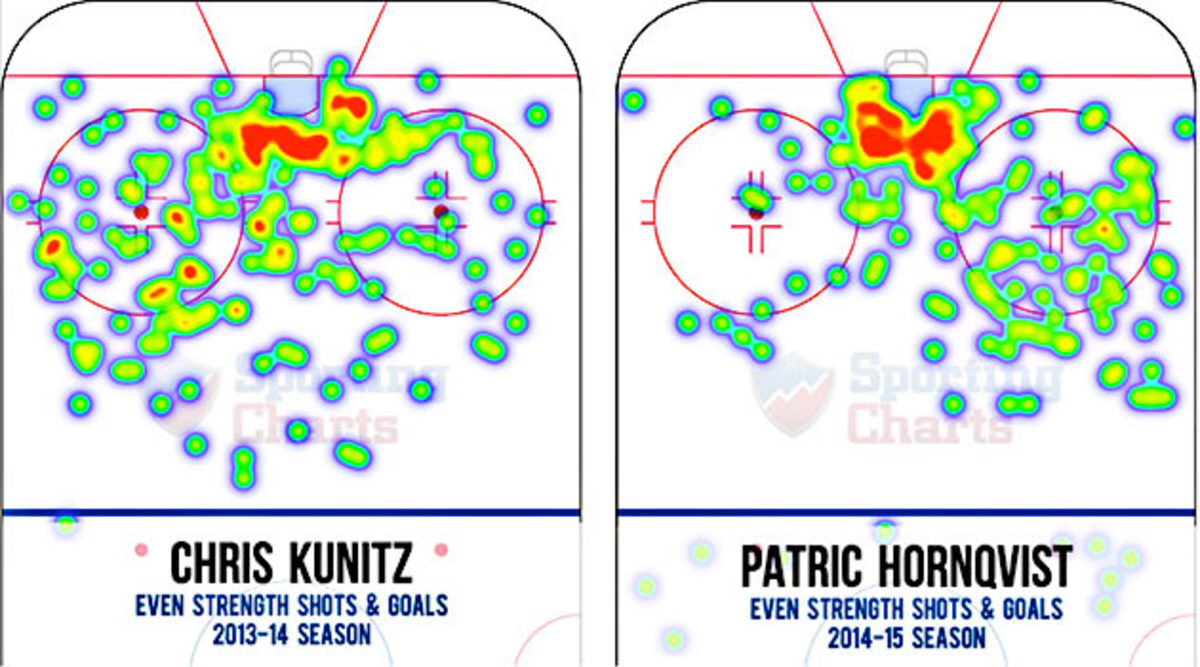What can the Penguins do to jumpstart their sputtering offense?

Cast your mind back to the waning days of Spring 2009 and you will probably be able to say you thought you were witnessing the beginning of a hockey dynasty. If you tell people the dynasty you envisioned was the Chicago Blackhawks, who'd reached the Western Conference Finals after missing the playoff the previous five seasons, you’re either a diehard Hawks fan or a complete liar.
Instead, like most of us, you probably foresaw the Pittsburgh Penguins riding the talent and leadership of Sidney Crosby and Conn Smythe MVP Evgeni Malkin to the first of several Stanley Cups.
Fast forward 6-1/2 years and the Penguins are looking an awful lot like the Dynasty That Never Was.
While you were away: Sharks, Avs plagued by poor underlying stats
What was supposed to be one of the NHL’s most exciting offensive juggernauts this season is currently sitting 27th in the league rankings in goals-for, and some pundits are already proclaiming the Phil Kessel trade with the Toronto to be a bust, with Mike Johnston—who actually is a good bench boss—all but certain to be the notorious coach killer’s next victim.
And yet despite all their troubles, the Penguins have somehow managed to produce a winning record. To say their season can be turned around at this point is a colossal understatement.
But for that to happen they need to make some bold changes.
What’s eating Sidney Crosby?
Yes, we’re aware that captain Crosby produced only 10 points in his first 19 games. But this whole “Crosby is no longer the world’s greatest player” bit is getting a tad overdone, especially since there’s no single player who has been consistently good enough to take that title away from him.
That said, there is a real possibility that even if Crosby remains the best in the game, the gap between him and everyone else has probably closed.
The table below is a reminder of just how good Crosby has been over the last eight seasons when he hasn’t been concussed.
<p>Season</p> | <p>Most pts.</p> | <p>Most 5-on-5 pts.</p> | <p>Most pts./60*</p> | <p>Crosby pts.**</p> | <p>Crosby 5-on-5 pts.**</p> | <p>Crosby pts./60**</p> |
|---|---|---|---|---|---|---|
2015-16 | P. Kane (30 | P. Kane (17) | L. Draisaitl (4.24) | 9 (160th) | 5 (160th) | 1.13 (246th) |
2014-15 | J. Benn (87) | J. Benn (53) | T. Johnson (3.00) | 84 (3rd) | 45 (10th) | 2.38 (17th) |
2013-14 | S. Crosby (104) | C. Perry (58) | R. Getzlaf (3.13) | 104 (1st) | 54 (3rd) | 2.54 (12th) |
2012-13 | M. St. Louis (60) | E. Staal (40) | S. Crosby (4.19) | 56 (4th) | 38 (2nd) | 4.19 (1st |
2011-12 | E. Malkin (109) | E. Malkin (66) | E. Malkin (3.46) | 37 (22 GP) | 24 (22 GP) | N/A |
2010-11 | D. Sedin (104) | D. Sedin (57) | S. Crosby (3.83) | 66 (41 GP) | 38 (41 GP) | 3.83 (1st) |
2009-10 | H. Sedin (112) | H. Sedin (72) | D. Sedin (3.75) | 109 (3rd) | 66 (2nd) | 3.36 (4th |
2008-09 | E. Malkin (113) | E. Malkin (55) | R. Bourque (3.12) | 103 (3rd) | 52 (2nd) | 2.82 (4th) |
2007-08 | A. Ovechkin (112) | A. Ovechkin (61) | S. Crosby (3.28) | 72 (53 GP) | 40 (53 GP) | 3.28 (1st) |
* Only players with 500+ min. of 5-on-5 time for seasons other than 2015-16 (>100 min.)
** Ranks is not provided when GP were less than 60
*** Crosby played less than 500 min. in 2011-12
**** All stats from NHL.com and stats.hockeyanalysis.com
But it also shows a worrying trend, namely that Crosby’s Points/60 has been falling off consistently for the past three seasons, and he has become increasingly reliant on the power play to score.
Fans and pundits alike have turned Crosby into a public punching bag. That’s unfortunate and just plain silly when the guy they’re writing off just turned 28 and finished third in league scoring last season. There’s no doubt that he’s going to score more than the 41 points. He’s on track for so far. But it’s also looking increasingly unlikely that he’ll ever return to the more than three points per 60 minutes he averaged in five of the six seasons from 2007 through 2013.
The Kessel “enigma”
We couldn’t speak about punching bags without saying something about Phil Kessel.
Remember this Hockey News cover?
Because he’s not Russian, hockey writers don’t get to apply labels like “enigmatic” to Kessel, so they just cut to the chase and call him fat, lazy and selfish.
In Toronto, that was overlooked, or at least tolerated, because of his productivity. We’re reminded of Buddy Ryan’s famous indictment of NFL Hall of Famer Cris Carter: “All he does is catch touchdown passes.” Ditto for Kessel and goals. Until this season.
We’d like to make a radical proposal that we think could help both Kessel and the Penguins as a team: Put him on the third line.
Pick yourself up off the floor, get back in your chair, and hear us out for a second …
Early leaders for major NHL awards at the season's first quarter mark
To begin with, it’s important to keep in mind that winning games is about scoring the most goals, not having the best top line. As Pens fans will recall, the team was most successful when Jordan Staal, not necessarily the greatest offensive talent, was still a threat that other teams couldn’t ignore and he netted more than 20 goals and 45 points in three of four seasons.
So while we thought it would be fun to watch Crosby and Kessel work some potentially otherworldly offensive magic, we also looked at the Penguins’ lineup this summer and wondered aloud what the other six forwards who would not be playing with either them or Malkin would do—skate around, pray they didn’t get scored on, and wait for their “big brothers” to come and beat everyone up?
But there’s actually a bigger problem with how Kessel has been used in Pittsburgh, and that has everything to do with the way he approaches the game.
Below are two shooting heat charts that show just how different Kessel is from another top goal scorer: Corey Perry. The first one shows where Perry takes his shots, with red areas being those from which he scores most often. As you can see, not only does Perry take a lot of shots from in-close, he generates a high shooting percentage by banging away in those high percentage areas.
Perry does what every good Canadian boy who wants to score goals does: He scores them from the places where unselfish “character” players are most likely to find them.
Compare that to Kessel who, as the second heat chart shows, likes to shoot from much further away. Shots from the high slot may be high percentage chances, but not only does Kessel not like to play in traffic, he’s actually nothing special when he does get in close.
Think of Kessel as the anti-Perry.

*The charts are courtesy of sportingcharts.com and cover all even strength situations from 2009-16.
These two charts cover all even strength shots between 2009 and 2016, so this isn’t random variation. It’s a snapshot of how these guys have played for pretty much their entire professional careers.
Kessel may have scored a ton of goals, but there’s no real pattern to how he gets them.
Now imagine you’re the world’s greatest playmaker. You’re able to get your sniper linemate the puck wherever he’d like it, through almost any kind of traffic. If your linemate’s Corey Perry, that’s easily done. If you’ve got Phil Kessel on your wing, we’re pretty sure the dialogue goes something like this:
Crosby: “Phil, where do you want me to put the puck? Just tell me and I’ll get it to you. But I need you to name me a spot. Maybe two. Anywhere, Phil. Please? With a cherry on top?”
Kessel: “Uh, gee Sid, I dunno. Somewhere in their zone I guess? Or maybe I can skate a little first? Can we just figure it out as we go?”
As anyone who watches him play knows, Kessel likes to carry the puck with speed into the zone and then tries to pick his spots from wherever his muse might lead him at that moment.
Selfish? Perhaps. But if you’re paired with a third-line center posing as first-liner Tyler Bozak, it’s actually a pretty effective way to get goals with no supporting cast.
What’s become painfully obvious is that Kessel’s one-man show routine in Toronto wasn’t simply him compensating for a lack of capable linemates. It’s how the guy approaches the game.
Kessel’s official shooting percentage (Sh%) is also very misleading. The table below shows the official shooting percentage (which only counts shots that are on net) and true shooting percentage (True Sh%, which counts blocked shots and misses) of the top 10 goal scorers during 5-on-5 play between 2010-15.

If you were wondering where Malkin and Crosby sat on this list, both had their fair share of goals during this period (74 and 73 respectively), and both were far more efficient shooters (Crosby’s Sh% was 13.0% and his True Sh% 8.0%, while Malkin’s was 12.7% and 7.4% respectively).
Kessel has been the second most trigger-happy scorer in the NHL, behind only Alex Ovechkin. Like Ovechkin, Kessel is actually a fairly low percentage shooter, especially when you account for the fact that because he tees it up from further out his shot attempts are missed or blocked more often than they likely would be if he played in close.
Now compare Kessel to Crosby’s recent running mates. As the heat charts below for Chris Kunitz in 2013-14 (20 5-on-5 goals) and Patric Hornqvist for 2014-15 (15 total 5-on-5 goals in 64 games) show, if you want to do well with Crosby you’d better be looking for a pass in high percentage areas, not running around with the puck and firing from wherever.

At first, the fact that Kessel was a disaster with Crosby surprised us as much as it did anyone. In retrospect, it makes sense since Crosby’s comparatively less talented linemates have been most effective when he can get them the puck for tap-ins close to the net, which is a place Kessel tends not to go and doesn’t do particularly well even when he does go there.
Kessel has done a little better playing with Malkin, but even then we don’t want to oversell it. The fact is Kessel’s production isn’t any better with Malkin than it was with Bozak.
When life gives you lemons…
Oddly enough, moving Kessel to the third line may provide huge value in fixing his team’s scoring woes.
The chart below shows: (i) Kessel’s zone starts when playing with Bozak between 2012-15; (ii) Kessel’s zone starts in Pittsburgh; and (iii) the zone starts of Pittsburgh’s top 3 Centers this season.

Coach Johnston could be forgiven for thinking an offensive weapon (and defensive liability) like Kessel needs to start his shifts in the offensive zone in order to be most effective. But considering Kessel’s game, this may be counterproductive. Kessel is most effective when given the opportunity to carry the puck in on the rush. It’s pretty tough to carry the puck into the offensive zone when you’re already there for an offensive zone faceoff.
Nick Bonino is the center who is already starting his shifts where Kessel should be.
Bonino is on his third team in as many years, so we’re not going to pretend we have a ton of reliable data with which to compare him to Bozak, but we do have a hunch that pairing Kessel with him would force opponents to treat Pittsburgh’s bottom 6 as something other than the lightweights they’ve been for the past several years.
We’ve seen what happens to the Penguins in the playoffs when teams can focus all their defensive energy on neutralizing Crosby and Malkin (Flyers, 2012, Bruins, 2013, Blue Jackets, 2014, Rangers 2014 and 2015…). Adding a third line with real scoring punch could be the missing ingredient.
Fans and pundits will find it hard to get over calling a 5-time 30 goal scorer (who also scored 20 in 48 games during the lockout shortened season) a “third liner” and may snicker at our suggestion. Sportsnet commentator Doug MacLean will probably crack a rib from laughing so hard.
But despite their record the Penguins are searching for answers right now, and often the best fix for tough situations is bold experimentation. The other alternative is to stay the course and pin all their hopes on two lines built around Crosby and Malkin.
We’ve all seen how that movie ends.
The Department of Hockey Analytics employs advanced statistical methods and innovative approaches to better understand the game of hockey. Its three founders are Ian Cooper (@phil_doha), a lawyer, former player agent and Wharton Business School graduate; Dr. Phil Curry (@ian_doha), a professor of economics at the University of Waterloo; and IJay Palansky, a litigator at the law firm of Armstrong Teasdale, former high-stakes professional poker player, and Harvard Law School graduate. Visit us on line at www.depthockeyanalytics.com
